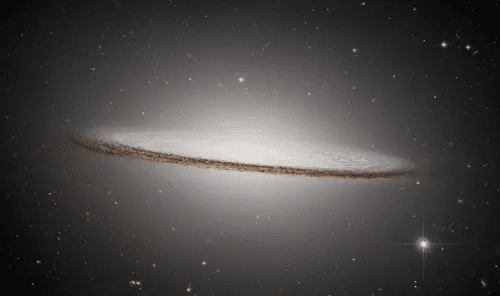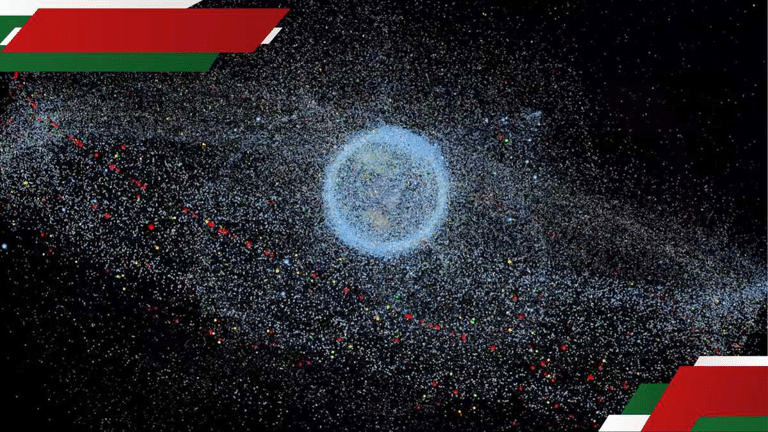
In the vast expanse of the northern Kenyan landscape, a palpable tension has emerged as the Kenya Space Agency (KSA) delivered a cryptic and unsettling announcement that has captured the imagination and anxiety of local communities. The possibility of an unidentified space object potentially falling in the region has transformed ordinary daily life into a landscape of anticipation, fear, and scientific speculation.
The announcement represents more than a mere scientific curiosity; it has become a profound social phenomenon that intertwines technological uncertainty with deep-rooted human emotions. Northern Kenya, traditionally characterized by its rugged terrain and pastoral communities, now finds itself at the epicenter of a potential cosmic event that could dramatically alter its environmental and social dynamics.
Local communities, predominantly comprising pastoral tribes with generations of connection to the land, are experiencing a complex mix of traditional belief systems and modern scientific uncertainty. Elders gather in community meetings, discussing the potential implications of this celestial threat, blending ancestral wisdom with contemporary scientific discourse. The space object’s potential descent has become a metaphorical bridge between traditional understanding and technological knowledge.
Scientific experts from the Kenya Space Agency have been conducting extensive surveillance and analysis, attempting to provide clarity amid the growing uncertainty. Their preliminary investigations suggest the object could be a fragment of space debris, potentially originating from satellite remnants or discarded rocket components. However, the precise nature, trajectory, and potential impact remain shrouded in scientific ambiguity.
Government agencies have begun implementing preliminary precautionary measures. Local administration has initiated community awareness programs, disseminating information about potential safety protocols and evacuation strategies. These efforts, while necessary, have simultaneously heightened community anxiety and created an atmosphere of controlled apprehension.
Environmental scientists are particularly concerned about the potential ecological implications of such an event. The northern Kenyan landscape, already vulnerable to climate challenges, could experience significant disruptions depending on the object’s composition and impact zone. Researchers are meticulously mapping potential landing sites, analyzing geological formations, and preparing comprehensive impact assessment strategies.

The international scientific community has shown considerable interest in this developing scenario. Astronomical institutions from various countries have begun collaborative monitoring efforts, sharing data and technological resources to better understand the potential descent. This global scientific collaboration highlights the interconnected nature of space exploration and planetary safety.
Local communities are experiencing a range of emotional responses. Some view the potential space object descent with a mixture of fear and fascination, seeing it as a extraordinary event that disrupts their traditional understanding of cosmic interactions. Others approach the situation with pragmatic resilience, drawing upon generations of survival strategies developed in challenging environmental conditions.
Media coverage has played a significant role in shaping public perception. News outlets oscillate between sensationalist reporting and measured scientific discourse, creating a complex narrative that simultaneously informs and potentially amplifies community anxieties. Social media platforms have become critical spaces for information exchange, speculation, and collective processing of this extraordinary situation.
The potential space object descent has inadvertently sparked broader conversations about Kenya’s technological capabilities and scientific infrastructure. The Kenya Space Agency’s response has been viewed as a critical test of the nation’s scientific maturity and preparedness in managing unprecedented technological challenges.
Economic considerations have also emerged as a critical dimension of this unfolding scenario. Local communities are contemplating potential disruptions to agricultural activities, livestock management, and traditional economic structures. The uncertainty surrounding the space object’s potential impact has created a state of economic suspension.
Indigenous knowledge systems are intersecting with contemporary scientific methodologies in fascinating ways. Traditional environmental observers are sharing ancestral insights about land changes, celestial movements, and environmental transformations, providing unique perspectives that complement technological monitoring.
The current scenario transcends a mere potential astronomical event. It represents a profound moment of collective anticipation, where technological uncertainty meets human resilience. The northern Kenyan communities are demonstrating remarkable adaptability, transforming potential threat into an opportunity for collective understanding and preparedness.
As the Kenya Space Agency continues its monitoring and analysis, the affected regions remain in a state of cautious preparedness. The potential space object descent has become more than a scientific phenomenon—it is a complex social narrative that reveals humanity’s intricate relationship with technological uncertainty.
This unfolding story symbolizes humanity’s enduring capacity to confront the unknown, blend scientific understanding with cultural wisdom, and maintain collective composure in the face of extraordinary circumstances. The celestial object’s potential descent becomes a metaphor for human adaptability, scientific curiosity, and the perpetual dance between known and unknown realms.




